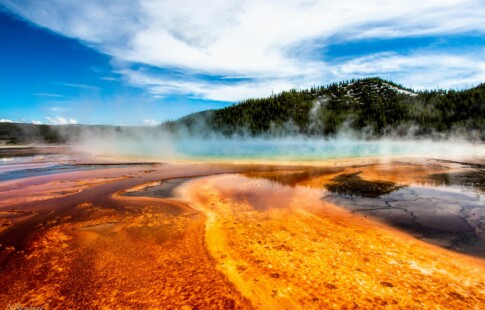
Do Water Filters Work?
We are reader-supported. When you buy through links on our site, we may earn affiliate commission.
With worries about lead, hormones, and PFAS in the water, investing in a water filter quickly becomes a household priority. Water scarcity and treatment issues plague countries worldwide, and drinking clean water is the surest way to good health. Do water filters work to help treatment plants keep populations safe?
Water treatment plants are supposed to make water access clean and safe for consumption, so what’s the need for another water filter? As companies attempt to meet ever-growing water use and demand, they have to craft new inventive and efficient ways to filter out particles faster than ever, including never-before-seen influences.
What’s in the Water?
Why can’t people drink water from the tap? Over the years, pollutants have steadily increased in severity in public waters. Water treatment plants have to work overtime to weed out the next big problem, and sometimes, their technologies can’t adapt faster than humans throw stuff out. Unfortunately, pollutant density and diversity has increased interest in personal water filters.
Everything in the water impacts flavor, appearance, and smell. Different regions worldwide are more adept at filtering out region-specific pollutants, while others have rudimentary treatment at best. Areas like California are the first to take microplastics in drinking water seriously, and it’s common knowledge it’s a pervasive issue. So, what does that mean for other pollutants?
So, what are the most common pollutants found in water that people don’t want to consume? Water treatment plants filter out dirt and large particles, but what else lurks beyond the naked eye? These are some of the most prominent:
- Microorganisms, like viruses, parasites, and bacteria
- Ammonia
- Mercury
- Metals like silver and copper
- Arsenic
- Volatile organic compounds (VOCs)
- Herbicides and pesticides
- Chlorine
- PFAS
- Byproducts of fossil fuel use
- Byproducts of erosion
- Wastewater and sewage
Water treatment plants can do their best to eliminate as many contaminants as possible that could negatively impact human health and the planet. Advancements like biomass algae can attempt to eat away at incoming particles, and other filters can push significant pollutants out, but there’s still more work to do. However, additional measures might be necessary with an at-home water filter.
Well, Do Water Filters Work?
Water filters do work. However, only so many filters on the market are 100% effective at removing everything in the water. Makers design filters to eliminate specific contaminants, so it’s the consumer’s responsibility to know what pollutants are most likely in their city’s water and purchase a filter that can deal with them. Considering this, many deal with the same core minerals and chemicals.
Consider it from this perspective — water treatment plants provide a base cleanse of the water, making it as safe as they can with sweeping measures and their present technology. Water filters force water to go through a more curated pass. It provides more micro attention that massive treatment plants can’t afford.
When households consider the cost of a water filter — typically less than $50 for a sink attachment or fridge pitcher — it’s worth the investment because the contaminants they promise to filter, they filter well.
What’s the Difference Between Purifiers and Filters?
Water filters and purifiers exist, and most use these terms interchangeably. In reality, they explain different processes. Filtration moves the water through an external barrier to remove particles, separating fluid from everything else. Purification describes the process of taking an isolate away from water samples — the critical difference here is cleansing can also remove other fluids from the water — whatever the isolate is, purification removes it.
With this description, purifiers offer more holistic defenses against contaminants because the chemical process can take more specific influences out. It uses more methods than simply relying on a concrete barrier. Processes like UV radiation, reverse osmosis, and distillation can clean water further.
Another consideration is how neglecting to replace a water filter could decrease the water quality worse than before you introduced a filter. Hard water intensifies with the presence of specific contaminants, like calcium and magnesium, which could revert to their original hardness if the filter is unchanged. All of those contaminants nest and could create mold. Those toxins simply rest at the bottom of the mechanism as water runs on them when the filter is unreachable.
Are Filters Eco-Friendly?
There are multiple layers to the eco-conscious conversation around water filters. The first and most obvious is that it helps reduce countless citizens’ carbon footprints worldwide because it prevents purchasing water in single-use plastic. Though not all filters are recyclable and go to landfill, the amount of resources and energy it saves that doesn’t go into plastic water bottles is astronomical. The extra aeration a water filter can provide also helps conserve water, reducing excess water use.
The reduction of fossil fuels is worth the investment alone. Single-use water bottles require 17 million barrels of harmful carbon-emitting fossil fuels, which is severely cut if households replace cases of Aquafine with a sink or fridge filter. Though single-use bottles are more recycled now than ever, it doesn’t mean they’re infinite. Plastic degrades every time it’s recycled, and the energy to do thIs isn’t free either.
Using a water filter also helps the environment by protecting appliances and tools long-term. The added metals and chemical pre-filtration can impact the longevity of everything from stainless steel pans to the faucet itself by helping curb sediment buildup that could harm performance and cleanliness if left unattended.
At-Home Water Treatment Options
Getting an at-home water filter is worth the money. Though it may not filter out the next wave of new pollutants, it can assist water treatment plants as another barrier between contaminants. Every day, experts work to analyze water samples and create new methods of making water as pure as possible.
Filters supplement those efforts while researchers get pulled into numerous directions. Innovative minds are at the forefront of uncovering the most efficient methods to keep water at safe drinking levels, but it’s encouraged to stay informed about local water conditions and take extra precautions with natural water sources.
Share on
Like what you read? Join other Environment.co readers!
Get the latest updates on our planet by subscribing to the Environment.co newsletter!
About the author
Maria Visser
Maria serves as the Assistant Editor of Environment.co. A true foodie and activist at heart, she loves covering topics ranging from veganism to off grid living.





